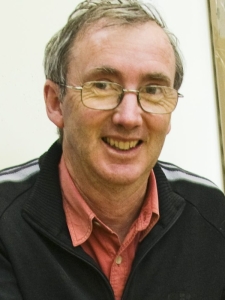Visiting Researchers
 |
Institute |
GNS Science |
Title |
Principal Scientist | |
Country |
New Zealand | |
Period of Stay |
2012/08/04 - 2012/12/03 | |
Research Theme |
Unlocking the seismogenic zone: determining physical properties of the plate interface beneath the NorthIsland of New Zealand. | |
Host Researcher |
Hiroshi SATO |
I study how plates collide deforming the North Island of New Zealand. This work requires the integration of a wide range of geophysical and geological observations. The results underpin geological hazard analysis and also exploration of natural resources.
A wide variety of fault slip behaviour is observed at subduction zones including seismic and asesismic slow slip. An understanding of frictional properties and geometry of the subduction interface is going to be an essential input for any successful model of subduction behaviour – and ultimately for prediction of the strength and frequency of earthquake ground motions. Despite this significance, there are few geophysical observations across a subduction zone where both contemporary and long-term slip measurements and a paleoseismic record are available. To address this gap an international team, including ERI scientists, completed a unique and ambitious suite of seismological observations over the southern Hikurangi system in 2010-11 to characterize the coupled seismogenic zone and its down-dip transition into aseismic slow slip; the Seismic Array HiKurangi Experiment (SAHKE). During my stay at ERI I am using part of the comprehensive SAHKE data to work primarily with my host, Professor Hiroshi Sato, together with Associate Professor Mochizuki to determine rock property contrasts across the plate interface and compare this with similar studies along the northern Hikurangi margin and along the Nankai margin of southeast Japan.
More information about the experiment can be found here http://www.gns.cri.nz/Home/News-and-Events/Media-Releases/Coast-to-coast-seismic-study
